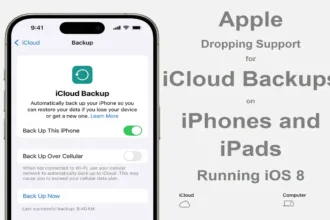Mobile phone technology has evolved massively over the past couple of decades, looking unrecognizable compared to what it once was. During this period of extreme growth, Apple has been at the fore, starting with their release of the iPhone in 2007, kickstarting an iconic era unlike any other. This has prompted many to question how Apple has retained its place as the go-to company in the smartphone market, staying ahead of its nearest competitors. In this article, we’ll look at five ways Apple has been able to stay ahead of the curve regarding its iPhone range.
A Focus on Seamless Integration
Apple prides itself on integrating easily and is committed to making this process as simple as possible. With a wide range of devices, including the iPhone and the Mac, Apple has been keen to ensure that these devices can work together without making life more difficult for the user, keeping users loyal and content. This integration has quickened the evolution of apps and games, so players can stop on one device and continue on another.
Apple’s iPhone is central to this focus on integration, serving as the key product that can connect other Apple devices. The iPhone can seamlessly transition calls and texts to the Macbook, for example, putting user convenience first. At the same time, this ability to integrate and flex also extends to the App Store and iCloud services, giving users everything they need without needing to go out of their way to get it.
Cutting-Edge Hardware

While integration is excellent and helps users feel at home when using Apple devices, the hardware supporting these devices is crucial. Without cutting-edge hardware, all of this work would be for nothing as users would instead choose to use another phone developer with access to more sophisticated components.
Technologies such as the Retina display, Touch and Face ID, and even the wireless sync functionality show how capable and willing Apple is to continually push things further, so much so that we often take them for granted. The company is constantly in extreme research and development, working tirelessly to integrate new components into their device prototypes, including new chips that can improve performance.
Apple also commits to helping the environment whenever possible, and this is closely connected to its focus on new hardware. Using recycled material from Apple devices and other discarded items, they can reduce their carbon footprint and push for a more circular process, minimizing waste.
Software that Sets the Standard
The iOS is widely seen as one of the best operating systems for mobile devices, and many believe it’s one of the key reasons the iPhone has been so successful. This operating system sets the standard for user experience, putting user experience and comfort first. It also puts security and privacy at the fore, giving users peace of mind by ensuring that sensitive data is protected and shielded from bad faith parties, mainly owing to Apple’s unique ability to protect users from intrusion better. This has been credited to how Apple’s code is written and the limited scope for customization.
The App Store is a much-loved part of the iOS ecosystem and has been central to the iPhone’s continued success, offering a wide range of apps that give users everything they could need. These apps are only published if they meet strict quality and safety criteria, creating a secure and more reliable space for users. Despite these standards, Apple tries to be developer-friendly, providing various guides and tools to make the app development process more manageable and connecting them with users willing to pay for apps that make their lives easier.
A Keen Eye on Design

It’s fair to say that while Apple doesn’t push the boat out when it comes to design, there is a clear commitment to a minimalist style that is consistent with other Apple devices, making it easy to recognize an Apple iPhone, iPad, or Mac. There is a focus on clean lines, high-quality materials, and attention to detail, which is a key deciding point for users. The iPhone has a sleek design that has been praised by countless users, setting the standard for how a smartphone should look and feel.
Beyond the physical phone, Apple’s design preference also extends to the user interface. The iPhone is straightforward, while the different buttons can be customized to add functionality when pressed simultaneously. The iconic home button was a mainstay on all iPhone devices, making it instantly recognizable until it was removed with the release of the iPhone X.
A Strong Ecosystem of Services
There’s much more to Apple than its operating system and roster of devices. Apple’s device ecosystem includes various services and apps that help keep users engaged and happy, meaning they won’t need to look elsewhere for anything. Apple Music, Apple TV, Apple Arcade, and Apple News are just a few examples of services that enhance the overall user experience for iPhone users.
These services and apps are part of Apple’s approach to creating the ultimate integrated user experience, allowing users to transition across devices and apps without hassle. This is all managed through the user’s Apple ID, connecting the many different devices to make things as easy as possible.
Apple constantly innovates to keep its users happy. They are strongly dedicated to creating the perfect ecosystem of apps and devices that give users everything they need to thrive. They have benefitted from a solid user base, which has grown in strength thanks to the reasons above, and they trust that Apple will continue innovating.






